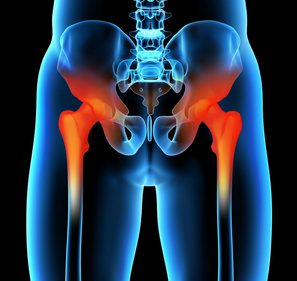How can a body part you have probably never heard of hurt so BAD? This is a common question we hear from individuals suffering from sacroiliac joint pain.
The joint is formed by the sacrum and the ilium where they meet on either side of the lower back, with the purpose of connecting the spine to the pelvis. This small joint is one of the most durable parts of the human body, and it is responsible for a big job.
The unassuming little sacroiliac joint withstands the pressure of the upper body’s weight pushing down on it, as well as pressure from the pelvis. It’s basically the cushion between the torso and the legs. As such, it handles force from pretty much every angle.
 While immensely strong and durable, this joint is not indestructible. Sacroiliac joint pain usually crops up as lower back pain, or pain in the legs or buttocks.
While immensely strong and durable, this joint is not indestructible. Sacroiliac joint pain usually crops up as lower back pain, or pain in the legs or buttocks.
Weakness in these areas may also be present. The typical culprits in causing the sacroiliac joint to exhibit pain are traumatic injuries to the lower back, but more frequently develops over a longer period of time.
Sacroiliac joint pain is often misdiagnosed as soft tissue issues instead of the joint itself. Chiropractors may rule out other medical conditions before settling on a diagnosis that includes a sacroiliac joint problem.
If you have suffered an injury, a degenerative disease, or otherwise damaged the sacroiliac joint, there are treatments available to help manage pain, promote healing, and lessen the chances of recurrence. Here are a few helpful guidelines to assist in effectively handling sacroiliac joint pain.
First, consider chiropractic and seeing a chiropractor. Chiropractic adjustments, not only provides great options for pain relief but also helps promote the healing process of this joint.
A chiropractor is specifically trained to guide you through several phases of care. They don’t focus just on pain relief but are primarily interested in helping you fix the problem.
Your Chiropractor will recommend a series of adjustments as away to handle sacroiliac pain. Tightness around the joint is a common cause of discomfort and pain. Chiropractic adjustments works to loosen and relax the lower back, buttocks, and leg areas, offering relief from pain.
They’re also very well trained in rehabilitation of the spine. This approach will help loosen the muscles surrounding the joint as well as strengthen them. This will decrease the risk of pain returning down the road.
In addition rest and ice the area. Avoid exaggerated movements of your lower back in order to relieve some of the body’s pressure on the sacroiliac joint. Also apply ice wrapped in a towel periodically to soothe the area and minimize the pain.
If you show symptoms of sacroiliac pain, it’s important to see a Doctor of Chiropractic so he or she can perform tests to correctly diagnose your condition. It could very well be another type of lower back problem. So quit suffering and give us a call!
I hope you found this article helpful and gained some new knowledge from it. Please, leave a comment or feel free to ask questions. Also, Let your Friends and Family know about the article by sharing it on Facebook.
In Health,
Dr Jerrod Dawson
